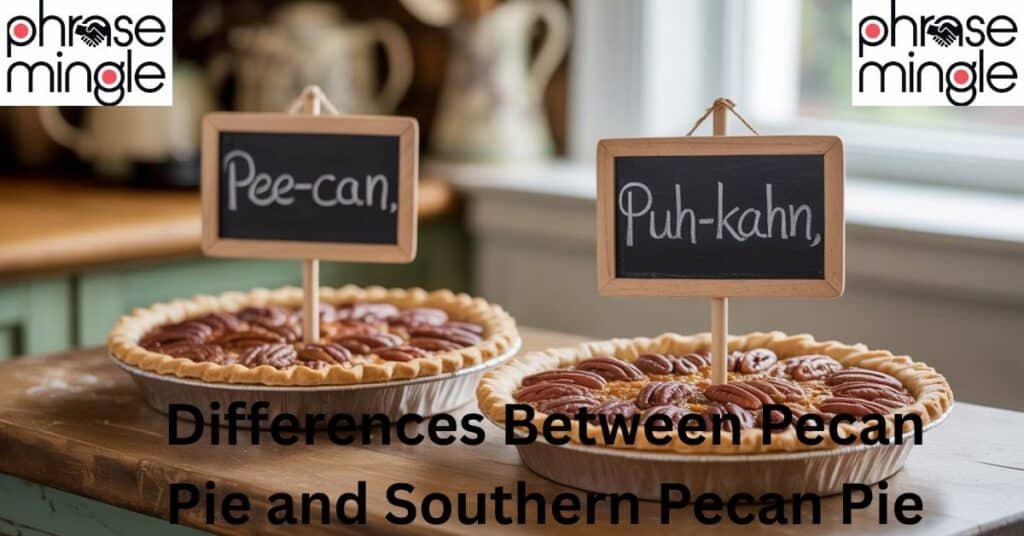Pecan pie and Southern pecan pie may sound similar, but the divide between them runs deeper than most people realize. Ever wondered why your aunt’s Southern pecan pie tastes completely different from that slice of pecan pie you grabbed at a northern diner? You’re not imagining things.
These aren’t just minor recipe tweaks. We’re talking about fundamental differences in philosophy, ingredients, and technique that transform an ordinary dessert into something transcendent. Whether you pronounce it “PEE-can” or “puh-KAHN,” understanding these distinctions will revolutionize your baking game.
Let’s go into the delicious details that separate good pecan pie from unforgettable Southern tradition.
Why Your Grandmother’s Recipe Actually Matters: Pecan Pie and Southern Pie
Every Southern kitchen holds secrets passed down through generations. These aren’t just recipes they’re cultural significance markers that define regional identity. When Great-Aunt Martha guards her pecan pie formula like state secrets, she’s preserving more than dessert instructions.
The state pie of Texas didn’t earn that title by accident. Southern pecan pie represents agricultural heritage, family traditions, and hospitality customs that northern variations simply can’t replicate without understanding the deeper context.
Your grandmother’s insistence on specific techniques wasn’t stubbornness. It was wisdom wrapped in butter and pecans.
The Great Pecan Pronunciation Divide
“PEE-can” versus “puh-KAHN” isn’t just linguistics it’s a battle line that reveals everything about your pie’s authenticity.
Southern states overwhelmingly favor “puh-KAHN,” especially in Georgia, Louisiana, and Texas where pecan orchards dominate the landscape. This pronunciation connects directly to French and Spanish colonial influences that shaped Southern culinary traditions.
Northern regions lean toward “PEE-can,” reflecting different settlement patterns and less historical connection to native pecan cultivation. The pecan pronunciation you choose signals which recipe tradition you’re following before you even crack an egg.
| Region | Pronunciation | Historical Influence |
|---|---|---|
| Deep South | puh-KAHN | French/Spanish colonial |
| Texas/Oklahoma | puh-KAHN | Native American/Mexican |
| Northeast | PEE-can | English colonial |
| Midwest | PEE-can | German/Scandinavian |
IF YOU WANT TO READ MORE CLICK HERE
Sweetness Philosophy: Subtle vs Bold
Here’s where things get interesting. Southern pecan pie embraces bold, unapologetic sweetness that makes your teeth ache in the best possible way. It’s dessert without compromise.
Northern versions often dial back the sugar, creating more “refined” flavors that won’t overwhelm delicate palates. This reflects broader cultural differences about hospitality and indulgence.
Southern bakers use sweetener combinations that layer complexity:
- Dark corn syrup for deep molasses notes
- Brown sugar for caramel undertones
- Sorghum syrup in traditional recipes
- Generous vanilla or bourbon additions
The result? Texture that’s both firm and gooey, with sweetness that lingers perfectly alongside rich butter content.
Corn Syrup Controversy: Light vs Dark
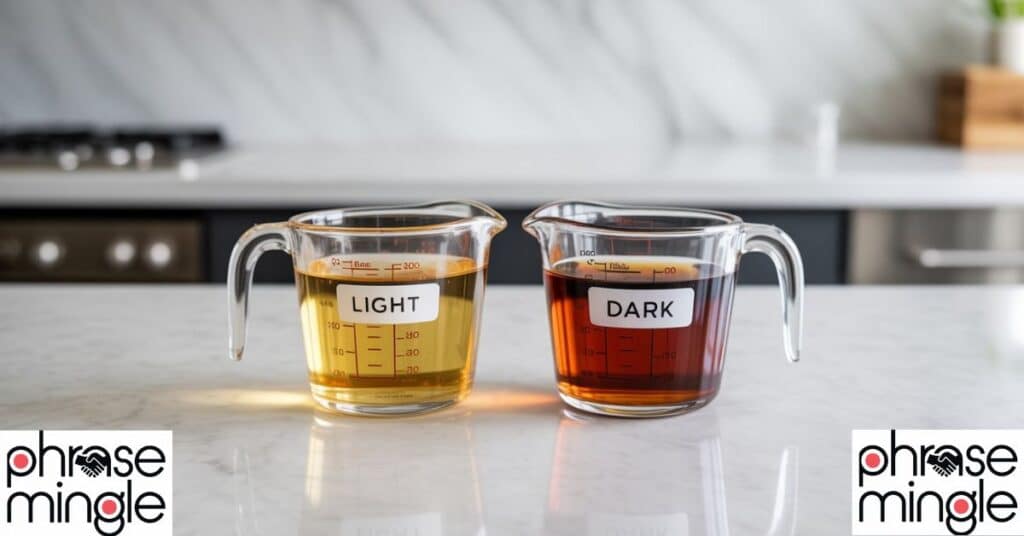
Dark corn syrup versus light isn’t just about color it fundamentally changes your pie’s personality.
Southern traditions overwhelmingly favor dark corn syrup because it adds robust molasses flavors that complement native pecans beautifully. The darker syrup creates that signature amber color that screams authenticity.
Northern recipe variations often default to light corn syrup, which produces cleaner sweetness but lacks the complex flavor depth that defines true Southern style.
Pro tip: If you can only find light corn syrup, add two tablespoons of molasses to approximate dark corn syrup’s flavor profile.
Pecan Selection Standards
Toasted pecans aren’t optional in Southern kitchens they’re mandatory for proper flavor development.
Southern bakers insist on:
- Native pecans from local orchards when possible
- Large pecan halves for visual impact
- Light toasting before mixing into filling
- Careful selection to avoid bitter or rancid nuts
Northern versions often accept:
- Imported pecans from any source
- Smaller pecan pieces for cost savings
- Raw pecans mixed directly into filling
- Less attention to nut quality
The difference shows immediately. Toasted pecans develop nutty complexity that raw nuts simply can’t match, while native Southern varieties offer superior flavor and texture.
Crust Expectations
Southern pecan pie crust demands butter content that creates flaky, rich pastry worthy of the filling it holds.
Traditional Southern pastry features:
- All-butter construction for maximum flavor
- Slightly thicker walls to support dense filling
- Hand-rolled techniques passed down through families
- Pre-baking to prevent soggy bottoms
Northern approaches often compromise:
- Shortening-butter combinations for easier handling
- Thinner crusts that may not support properly
- Machine-rolled or store-bought alternatives
- Less attention to pre-baking techniques
The cultural significance of hand-made crust can’t be overstated in Southern tradition. It’s where hospitality begins.
Filling Consistency Philosophy
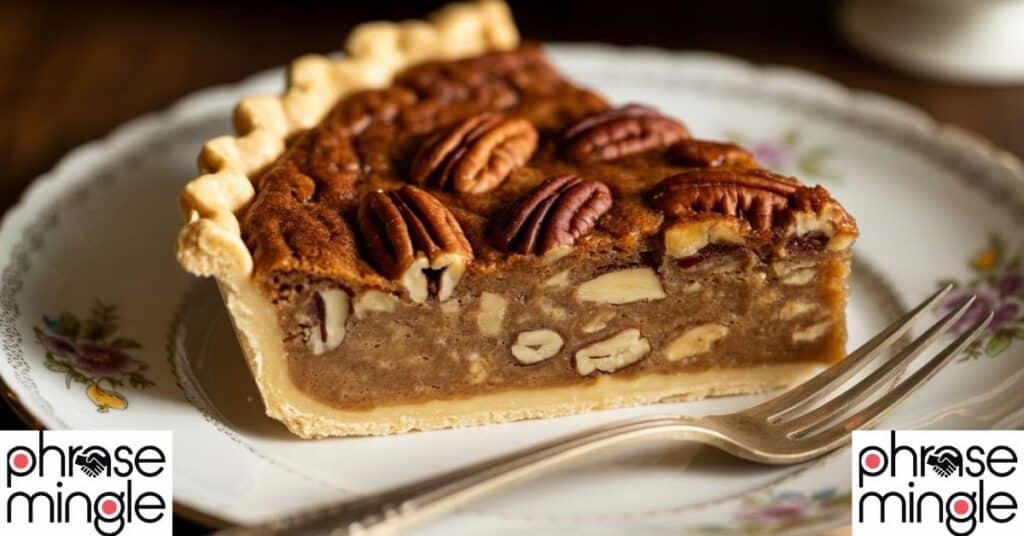
Southern pecan pie achieves perfect texture through precise egg ratios and careful temperature control.
The ideal Southern filling:
- Sets firmly enough to slice cleanly
- Maintains slight jiggle in the center
- Creates custard-like consistency throughout
- Holds pecan halves suspended evenly
Northern versions often accept:
- Softer, more liquid consistency
- Greater variation in texture
- Less precise setting standards
- More tolerance for runny centers
Getting this right requires understanding how eggs, sweetener, and heat interact to create custard perfection.
Vanilla Extract vs Bourbon Enhancement
Bourbon isn’t just flavoring in Southern pecan pie it’s tradition distilled into liquid form.
Southern bakers commonly add:
- 1-2 tablespoons bourbon for complexity
- High-quality vanilla extract as foundation
- Sometimes both for layered flavor
- Whiskey alternatives like rum in coastal areas
The alcohol cooks out during baking, leaving behind sophisticated flavor notes that complement pecans beautifully. Bourbon pecan pie represents the pinnacle of Southern dessert craftsmanship.
Northern recipes typically stick with vanilla extract alone, missing the opportunity for flavor complexity that defines authentic Southern style.
Brown Sugar vs White Sugar Foundations
Southern pecan pie builds flavor complexity through strategic sugar selection.
Traditional Southern approach:
- Brown sugar for molasses depth
- White sugar for clean sweetness balance
- Sometimes raw sugar for texture interest
- Careful ratios to avoid overwhelming pecans
The molasses in brown sugar creates caramel notes that enhance the dark corn syrup foundation, resulting in recipe variations that taste like liquid pralines.
Northern versions often rely heavily on white sugar, producing cleaner but less complex flavor profiles that don’t showcase pecan quality as effectively.
Salt Addition Traditions
Salt might seem minor, but it makes the difference between good and transcendent pecan pie.
Southern bakers understand that:
- Generous salt enhances sweetness perception
- Fine sea salt integrates better than table salt
- Proper salt balance prevents cloying sweetness
- Salt brings out pecan’s natural nuttiness
Northern recipes often under-salt, missing the flavor enhancement that proper seasoning provides. Southern pecan pie achieves perfect sweet-salty balance that keeps you coming back for more.
Baking Temperature Techniques
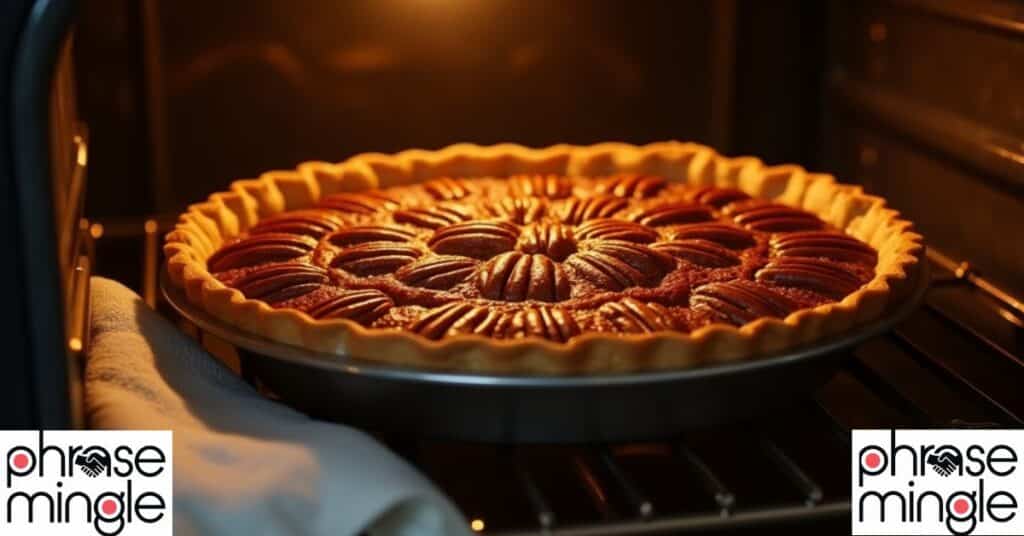
Temperature control separates amateur from expert pecan pie execution.
Southern technique:
- Start high 425°F for crust setting
- Reduce to 350°F for gentle filling cooking
- Extended baking time for proper set
- Careful monitoring to prevent over-browning
This low-and-slow approach ensures:
- Evenly set custard throughout
- Properly cooked crust bottom
- Toasted pecans that don’t burn
- Perfect texture consistency
Northern approaches often use consistent moderate temperatures, which can result in uneven cooking and compromised texture.
Serving Temperature Customs
Southern pecan pie tastes best at room temperature, allowing flavors to fully develop and texture to achieve ideal consistency.
Southern serving traditions:
- Cool completely before slicing
- Serve at room temperature for best flavor
- Avoid refrigeration when possible
- Allow pie to “rest” for optimal texture
Northern customs often favor warm pie with ice cream, which can mask the complex flavors that make Southern pecan pie special.
The cultural significance of proper serving temperature reflects Southern patience and attention to detail.
Whipped Cream vs Ice Cream Accompaniments
Southern tradition keeps accompaniments simple to showcase the pie’s inherent perfection.
Traditional Southern approach:
- Lightly sweetened whipped cream
- Sometimes bourbon-spiked cream
- Minimal garnish to avoid competition
- Focus on pie’s natural excellence
Northern preferences often lean toward:
- Vanilla ice cream for temperature contrast
- More elaborate garnishes
- Additional sauces or toppings
- Treatments that may overwhelm subtle flavors
Southern pecan pie achieves such perfect balance that it needs minimal enhancement to shine.
Holiday vs Year-Round Timing
Southern pecan pie appears year-round because pecans are harvested locally and dessert traditions aren’t limited to holidays.
Southern timing patterns:
- Fresh pecan harvest in fall drives peak season
- Summer church socials feature pecan pie regularly
- Cultural significance extends beyond holidays
- Available whenever hospitality demands
Northern regions typically reserve pecan pie for Thanksgiving and Christmas, treating it as special occasion dessert rather than Southern staple.
This frequency difference affects recipe development and technique refinement significantly.
Recipe Secrecy vs Sharing Culture
Southern pecan pie recipes often stay guarded within families, creating recipe variations that develop over generations.
Southern tradition:
- Recipes passed down orally
- Secret ingredients never written down
- Family pride in unique variations
- Competitive protection of special techniques
Northern culture tends toward:
- Open recipe sharing
- Standardized cookbook approaches
- Less family secrecy around techniques
- More willingness to experiment publicly
This secrecy creates the mystique and cultural significance that elevates Southern pecan pie above ordinary dessert status.
Presentation and Garnish Styles
Southern pecan pie presentation emphasizes the pie itself rather than elaborate decoration.
Traditional Southern presentation:
- Clean, simple slicing technique
- Pecan halves arranged attractively on top
- Minimal garnish that doesn’t compete
- Focus on pie’s natural beauty
The philosophy: when you’ve created perfection, don’t mess with it through unnecessary embellishment.
Regional Variations Worth Knowing
Southern pecan pie isn’t monolithic each region adds distinctive touches that reflect local traditions.
Texas variations:
- Often includes bourbon or whiskey
- May feature native Texas pecans exclusively
- Sometimes incorporates Mexican influence spices
- State pie of Texas status demands perfection
Georgia traditions:
- Emphasis on native Georgia pecans
- Traditional dark corn syrup foundation
- Conservative approach to flavor additions
- Focus on pecan quality above all
Louisiana style:
- May include sorghum syrup for complexity
- Sometimes features rum instead of bourbon
- Influences from Creole cooking traditions
- Sweet potato pecan pie variations exist
Mississippi approaches:
- Chocolate pecan pie variations popular
- Traditional techniques with modern twists
- Strong family recipe traditions
- Connection to broader Southern dessert culture
The Science Behind the Differences
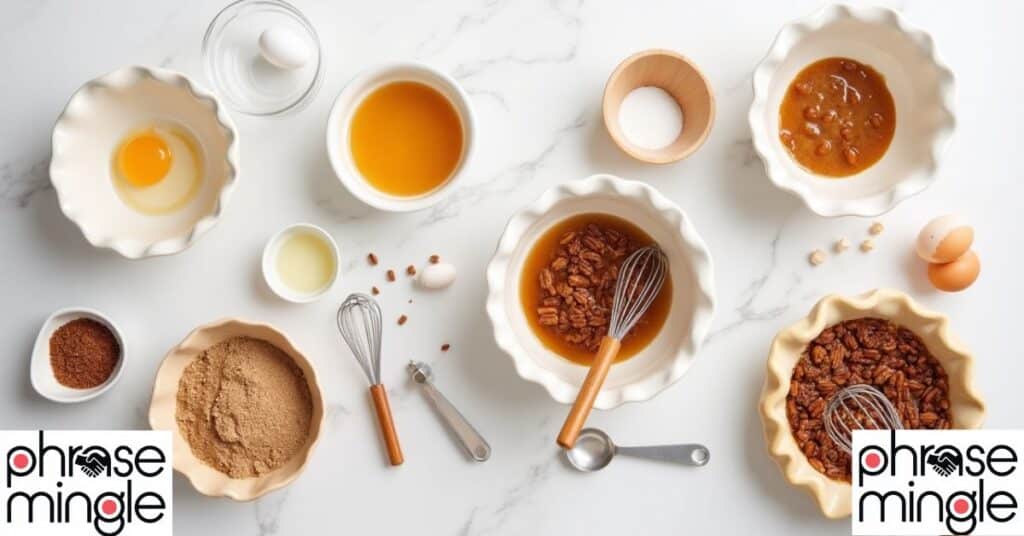
Understanding the chemistry explains why these differences matter so much.
Corn syrup types affect:
- Crystallization prevention differently
- Flavor development through Maillard reactions
- Texture through viscosity variations
- Color development during baking
Egg ratios determine:
- Custard setting point precision
- Texture consistency throughout
- Structural integrity for slicing
- Protein coagulation timing
Sugar combinations create:
- Complex flavor layering
- Proper caramelization timing
- Sweetness balance with other ingredients
- Moisture retention characteristics
Butter content influences:
- Crust structural integrity
- Flavor richness development
- Texture contrast with filling
- Overall eating experience quality
Expert Baker Insights
Professional pastry chefs who’ve mastered Southern pecan pie share crucial wisdom:
“The key isn’t using rare ingredients it’s about honoring traditional methods that have been passed down over time,” says pastry chef Lisa Donovan, a James Beard Award winner. “Every shortcut you take shows in the final product.”
Competition winners consistently emphasize:
- Toasted pecans for maximum flavor development
- Proper sweetener balance rather than simple sweetness
- Texture consistency through careful temperature control
- Cultural significance understanding that informs every decision
Professional techniques that matter most:
- Blind-baking crust to prevent sogginess
- Tempering eggs to prevent curdling
- Proper cooling for ideal texture
- Quality ingredient selection throughout
Making Your Choice: Which Style Fits You?
Choosing between pecan pie styles depends on understanding what you value most.
Choose Southern style if you want:
- Maximum flavor complexity and depth
- Traditional cultural significance
- Bold, unapologetic sweetness
- Texture that showcases technique mastery
- Connection to authentic regional tradition
Consider Northern adaptations if you prefer:
- More subtle flavor profiles
- Easier ingredient accessibility
- Less intensive technique requirements
- Familiar flavor expectations
- Flexible serving preferences
Assessment questions:
- Do you enjoy bold, complex desserts?
- Are you willing to invest in quality ingredients?
- Does traditional technique appeal to you?
- Do you want cultural significance in your baking?
- Are you committed to proper texture development?
Respecting Both Traditions
Both pecan pie traditions deserve recognition for different reasons. Northern versions offer accessibility and familiar comfort, while Southern pecan pie provides authentic cultural significance and unmatched flavor complexity.
The key lies in understanding what each tradition offers rather than dismissing either approach. Whether you’re making bourbon pecan pie for special occasions or chocolate pecan pie for family gatherings, respecting the techniques behind each style improves your results dramatically.
Southern pecan pie represents more than dessert it’s edible history that connects us to agricultural traditions, family bonds, and hospitality customs that deserve preservation. When you master these techniques, you’re not just baking. You’re participating in cultural significance that spans generations.
The next time you encounter authentic Southern pecan pie, notice the toasted pecans, appreciate the perfect texture, and recognize the cultural significance in every perfectly balanced bite. That’s not just dessert that’s tradition worth preserving.
Your kitchen holds the power to continue this delicious legacy. Choose your sweetener, select your pecans, and bake with the respect these traditions deserve.

Jamze Hope,
I am a writer at Phrase Mingle, where i shares insightful phrase guides to help readers enhance their language skills. With a passion for words and clear communication, Jamze creates engaging content that simplifies complex expressions, making them accessible to all.

